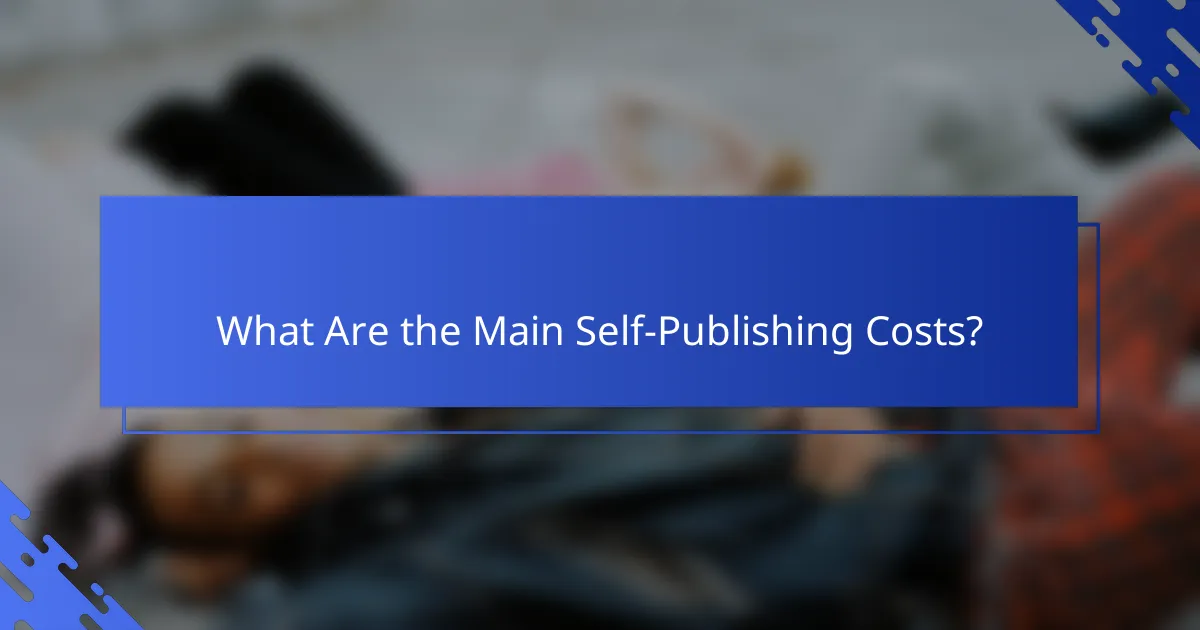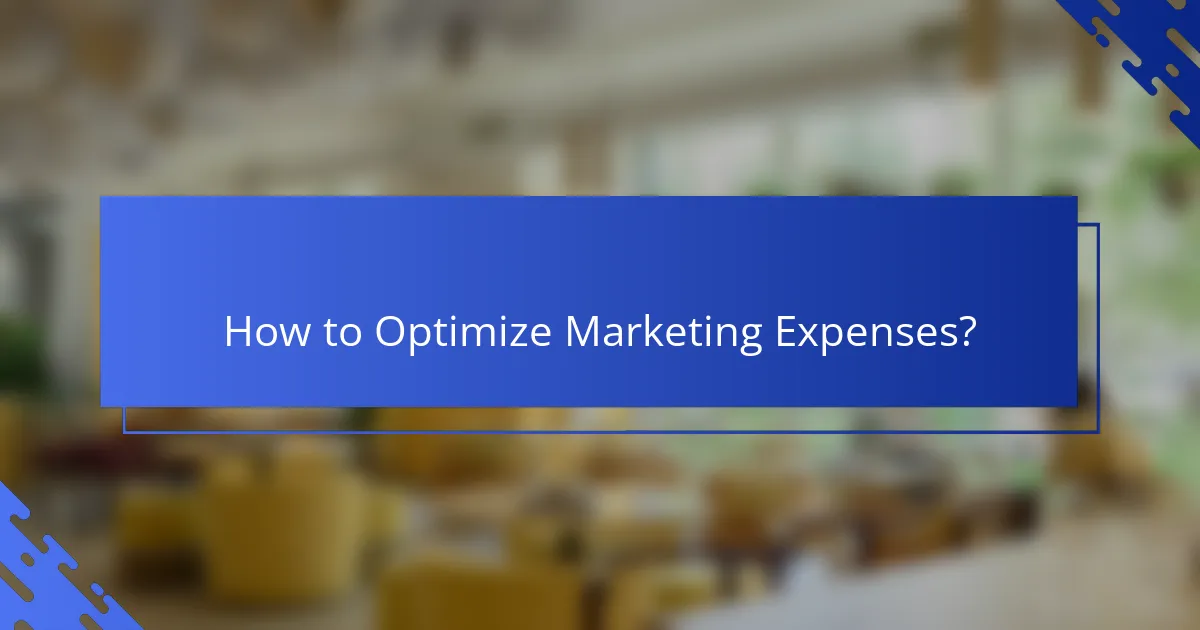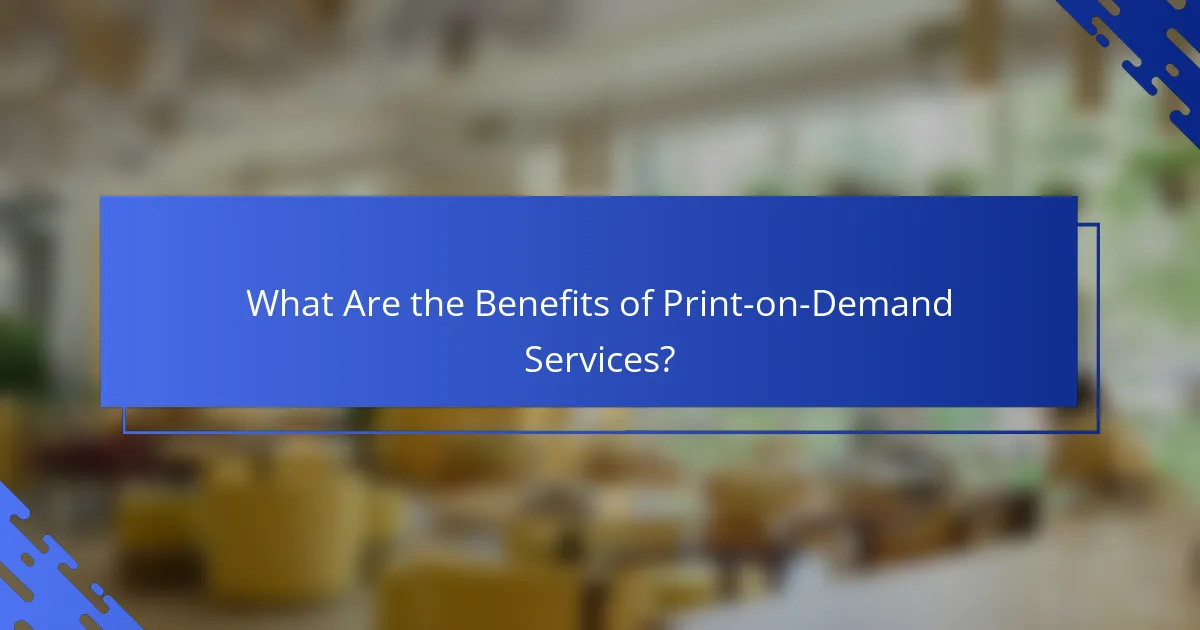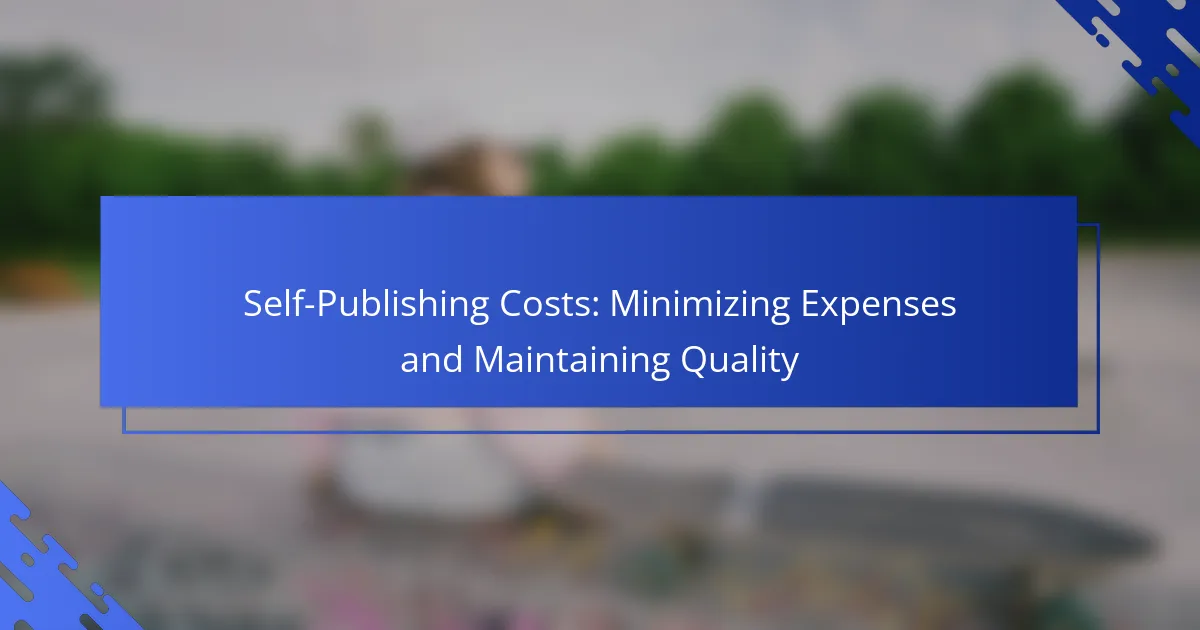Self-publishing can be a rewarding journey, but it often comes with various costs that authors must navigate. By understanding key expenses such as editing, cover design, and marketing, writers can effectively budget while ensuring their work maintains high quality. Strategic choices and resourceful approaches can significantly reduce costs without sacrificing the integrity of the final product.

What Are the Main Self-Publishing Costs?
The main self-publishing costs include editing, cover design, marketing, printing, distribution, and platform fees. Understanding these expenses helps authors budget effectively while maintaining quality in their published works.
Editing expenses
Editing is crucial for producing a polished manuscript and can vary significantly in cost. Professional editing services typically range from a few hundred to several thousand dollars, depending on the level of editing required—developmental, copyediting, or proofreading.
To minimize editing expenses, consider joining a writer’s group for peer feedback or using editing software for initial drafts. However, investing in a professional editor is advisable to ensure your book meets industry standards.
Cover design costs
A compelling cover design is essential for attracting readers and can cost anywhere from $100 to over $1,000. The price often reflects the designer’s experience and the complexity of the artwork.
To save on cover design, explore freelance platforms for budget-friendly options or use DIY design tools. However, remember that a high-quality cover can significantly impact sales, so weigh cost against potential returns.
Marketing and promotion fees
Marketing and promotion costs can vary widely, from free social media campaigns to paid advertising that can run into the thousands. Effective marketing strategies often require a mix of both organic and paid efforts.
Consider allocating a budget of around 10-20% of your expected revenue for marketing. Utilize social media, book blogs, and email newsletters to promote your work without overspending.
Printing and distribution expenses
Printing and distribution costs depend on the format of your book—print-on-demand services typically charge per copy, while bulk printing can lower the cost per unit. Expect to pay anywhere from a few dollars to over $10 per book, depending on quality and quantity.
Research different printing options and distribution channels to find the most cost-effective solution. Platforms like Amazon KDP and IngramSpark offer various pricing structures that can impact your overall expenses.
Platform fees
Self-publishing platforms often charge fees for listing and selling your book, which can include a percentage of sales or a flat fee per book sold. These fees can range from 15% to 30% of your book’s sale price, depending on the platform.
When choosing a platform, compare the fee structures and services offered. Some platforms may provide additional marketing support or distribution channels that justify higher fees, so evaluate the overall value rather than just the costs.

How Can You Minimize Editing Costs?
To minimize editing costs, focus on strategic choices that maintain quality while reducing expenses. Utilizing freelance editors, leveraging editing software, and joining writer critique groups can significantly lower your editing budget without compromising your manuscript’s integrity.
Utilize freelance editors
Hiring freelance editors can be a cost-effective way to get professional feedback on your work. Rates for freelance editing can vary widely, typically ranging from $20 to $100 per hour, depending on the editor’s experience and the complexity of your manuscript.
When selecting a freelance editor, consider their specialization, such as developmental editing or copyediting, to ensure they meet your specific needs. Always request samples of their previous work and check references to gauge their effectiveness.
Leverage editing software
Editing software can serve as a valuable tool to reduce costs associated with professional editing. Programs like Grammarly, ProWritingAid, and Hemingway Editor offer features that can catch grammatical errors and suggest style improvements at a fraction of the cost of hiring an editor.
While these tools can enhance your writing, they should complement, not replace, human editing. Use them for initial drafts to polish your work before sending it to a professional editor for a final review.
Join writer critique groups
Participating in writer critique groups can provide valuable feedback at no cost. These groups often consist of fellow writers who exchange critiques, helping each other improve their manuscripts through collaborative efforts.
To maximize the benefits, choose a group that matches your genre and experience level. Be open to constructive criticism and provide thoughtful feedback to others, fostering a supportive environment that enhances everyone’s writing skills.

What Are Affordable Cover Design Options?
Affordable cover design options can help self-publishing authors create appealing book covers without breaking the bank. By utilizing DIY tools, hiring budget-friendly designers, or exploring pre-made templates, authors can achieve professional results while minimizing expenses.
Use DIY design tools like Canva
DIY design tools such as Canva allow authors to create custom book covers using user-friendly interfaces and a variety of templates. These platforms often provide free access to basic features, with premium elements available for a small fee, typically ranging from $1 to $15.
When using DIY tools, focus on maintaining a professional look by selecting high-quality images and fonts. Ensure that the cover design aligns with your genre to attract the right audience.
Hire budget-friendly designers on Fiverr
Fiverr is a popular platform where authors can find freelance designers offering cover design services at various price points. Prices can start as low as $5, but for quality work, expect to pay between $20 and $100 depending on the designer’s experience and the complexity of the cover.
When hiring on Fiverr, review portfolios and customer feedback carefully. Clear communication about your vision and expectations can help ensure a satisfactory outcome.
Explore pre-made cover templates
Pre-made cover templates are an excellent option for authors looking for quick and cost-effective solutions. Websites like Creative Market and Etsy offer a range of professionally designed templates that can be customized for your book, typically costing between $10 and $50.
When selecting a pre-made template, ensure it fits your book’s theme and genre. Check the licensing terms to confirm that you can use the design for commercial purposes without restrictions.

How to Optimize Marketing Expenses?
To optimize marketing expenses, focus on cost-effective strategies that maximize reach and engagement without overspending. Leveraging digital platforms and targeted content can significantly reduce costs while maintaining quality and effectiveness.
Utilize social media platforms
Social media platforms are powerful tools for promoting your self-published work at minimal cost. Create profiles on popular sites like Facebook, Instagram, and Twitter to share updates, engage with readers, and build a community.
Consider using organic posts alongside paid advertisements to reach a broader audience. Regularly interacting with followers can enhance visibility and foster loyalty, which is essential for long-term success.
Engage in content marketing
Content marketing involves creating valuable content that attracts and retains an audience, ultimately driving sales. Start a blog related to your book’s themes or genres, offering insights and tips that resonate with potential readers.
Utilizing SEO techniques can help your content rank higher in search results, increasing organic traffic. Aim for consistency in posting to keep your audience engaged and informed about your work.
Consider email marketing strategies
Email marketing remains one of the most effective ways to connect with readers directly. Build an email list by offering free content, such as a sample chapter or exclusive insights, in exchange for subscribers’ contact information.
Craft engaging newsletters that provide updates on your writing journey, upcoming releases, and special promotions. Personalizing emails can significantly improve open and click-through rates, ensuring your messages reach your audience effectively.

What Are the Benefits of Print-on-Demand Services?
Print-on-demand (POD) services offer authors the ability to publish their books without the need for large upfront investments. By printing copies only as they are ordered, these services minimize financial risk while maintaining quality and control over the publishing process.
Reduced upfront costs
One of the primary benefits of print-on-demand services is the significant reduction in upfront costs. Traditional publishing often requires authors to invest in large print runs, which can be financially burdensome. With POD, authors can produce books in small quantities, sometimes even a single copy at a time, which eliminates the need for large initial investments.
Authors typically pay for printing only when a book is sold, which means they can allocate their budget more effectively. For instance, printing a single paperback book may cost anywhere from $3 to $10, depending on factors like page count and quality. This model allows authors to focus on marketing and other aspects of their book launch without the stress of unsold inventory.
To maximize the benefits of reduced upfront costs, authors should carefully consider their pricing strategy. Setting a price that covers printing costs while remaining attractive to readers is crucial. Additionally, authors should be aware of the royalty structures of different POD platforms, as these can affect overall profitability.
